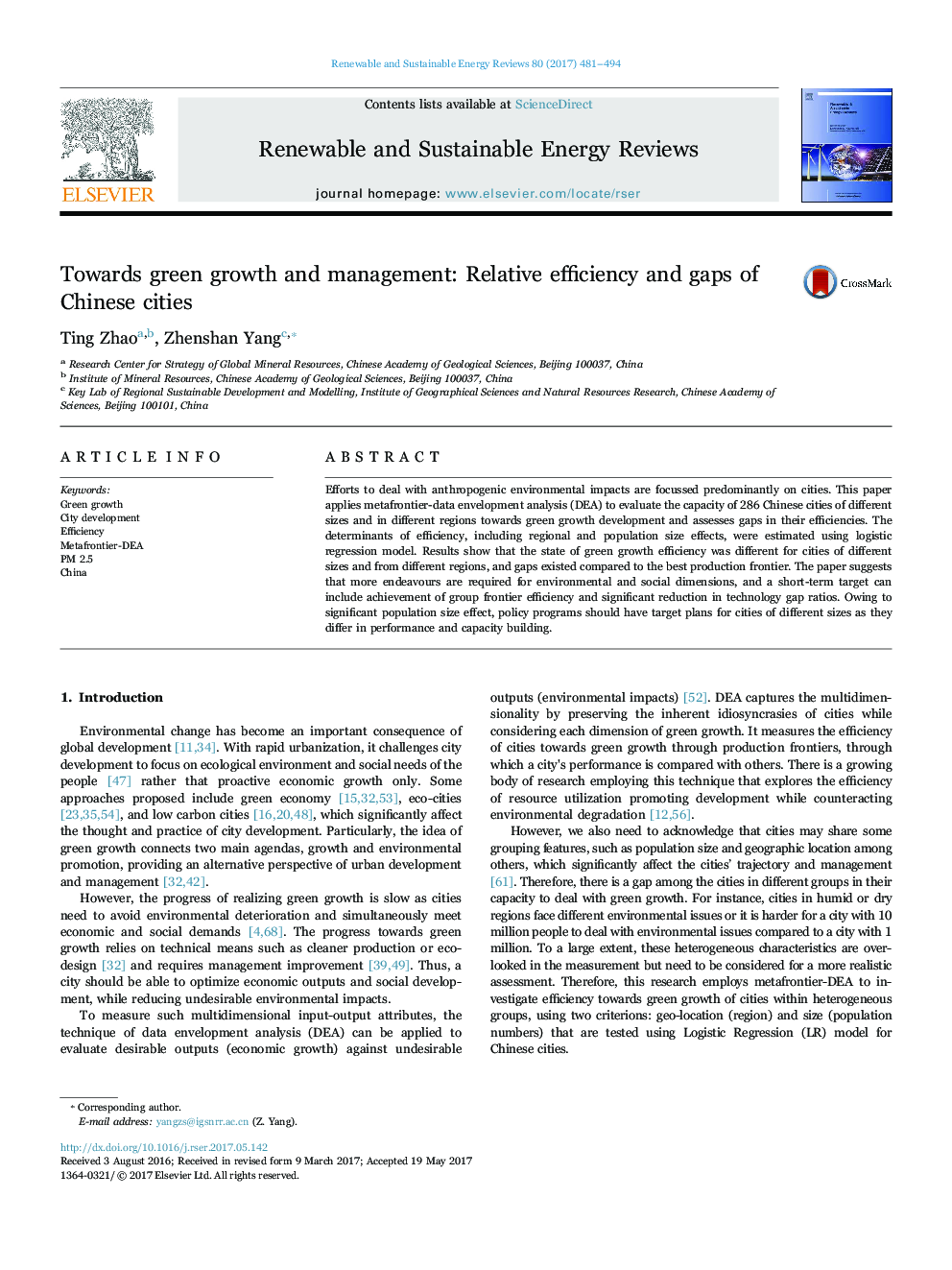| Article ID | Journal | Published Year | Pages | File Type |
|---|---|---|---|---|
| 5482071 | Renewable and Sustainable Energy Reviews | 2017 | 14 Pages |
Abstract
Efforts to deal with anthropogenic environmental impacts are focussed predominantly on cities. This paper applies metafrontier-data envelopment analysis (DEA) to evaluate the capacity of 286 Chinese cities of different sizes and in different regions towards green growth development and assesses gaps in their efficiencies. The determinants of efficiency, including regional and population size effects, were estimated using logistic regression model. Results show that the state of green growth efficiency was different for cities of different sizes and from different regions, and gaps existed compared to the best production frontier. The paper suggests that more endeavours are required for environmental and social dimensions, and a short-term target can include achievement of group frontier efficiency and significant reduction in technology gap ratios. Owing to significant population size effect, policy programs should have target plans for cities of different sizes as they differ in performance and capacity building.
Related Topics
Physical Sciences and Engineering
Energy
Renewable Energy, Sustainability and the Environment
Authors
Ting Zhao, Zhenshan Yang,
